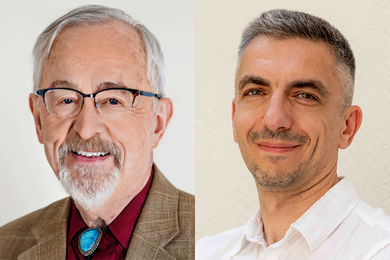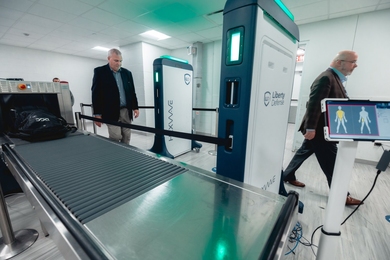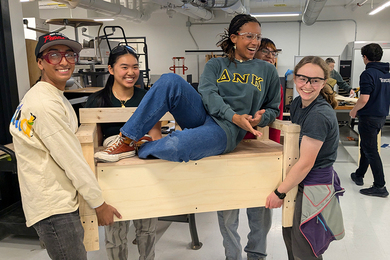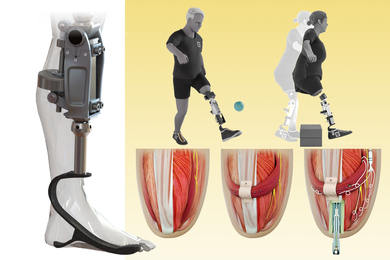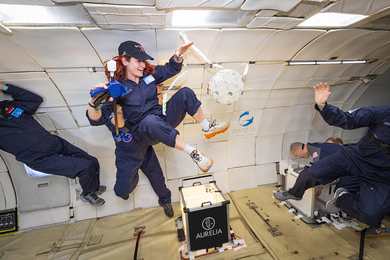Next week, cancer researchers from across MIT’s campus will begin moving into their new headquarters at the recently completed David H. Koch Institute for Integrative Cancer Research.
The seven-story, 365,000-square-foot building, which stretches along Main Street between Ames and Vassar streets, will house 25 faculty labs and about 600 researchers. Scientists and engineers will work side-by-side in the new building, fostering collaborations between disciplines such as biology, chemical engineering, computer science, materials science and more.
“Part of the reason we wanted to put everyone together under one roof was to promote the interdisciplinary cancer research that will be a hallmark of the Koch Institute,” says Tyler Jacks, director of the institute. “Horizontal interactions are easier to achieve than vertical interactions, so we wanted biologists and engineers on the same floors.”
MIT’s Center for Cancer Research, founded in 1974, became the Koch Institute in 2007. Ground was broken for the new building, which will replace the current headquarters in Building E17 and E18, in March 2008. The formal dedication ceremony for the new building will be held on March 4, 2011, as part of MIT’s 150th anniversary celebration.
Most of the engineers who will be joining the cancer biologists in the new facility currently have labs scattered across campus. Bringing them into the new building will change the culture, and research direction, of the institute, says Jacks.
“We’re bringing in individuals trained in very different disciplines, who essentially speak different languages,” he says. But, the scientists and engineers in the institute have already begun working together, he adds. “People are becoming much more familiar with the terms and approaches from different disciplines, and starting to incorporate them into their daily research life.”
From TechTV: "The Future of Cancer Research is Here"
Video: J. Schmitt, L. Clark/MIT Resource Development
All of the building’s common areas — meeting rooms, tea rooms, elevators, even the bathrooms — are clustered in the center of the building, to help promote chance encounters that could lead to new research collaborations.
The new building also features the Swanson Biotechnology Center, a 20,000-square-foot cluster of “core facilities” that offer researchers access to cutting-edge technology that their individual labs likely could not afford to purchase. Those include technology for whole-animal imaging, cell imaging, DNA sequencing, and nanomaterial characterization. Those facilities are available not just to Koch researchers but the entire MIT community, says Jacks.
Another key feature of the building is its position as the new gateway to the eastern edge of MIT’s campus, says Arne Abramson, the Department of Facilities manager in charge of the building project. “It helps define, as people are walking down Main Street, where MIT begins,” he says.
A long corridor facing Main Street will feature a gallery displaying scientific images submitted by members of the MIT community. The plaza and courtyard outside the building should serve as a gathering place for those who work and study on the east side of campus.
Originally scheduled to open in December 2010, the building is ready a month ahead of schedule and was completed within its original budget, says James May, Department of Facilities senior project manager. May credits that to good teamwork between MIT, the Koch Institute administration and faculty, the contractor, William A. Berry and Son, and the architect, Ellenzweig.
Researchers will move into their new labs in a staggered schedule over the next seven weeks, says Sudy Nally, project manager at the Department of Facilities, who is coordinating the move. Each lab’s move will take at least two days. “Right now, it’s a lot of scheduling,” she says.
The seven-story, 365,000-square-foot building, which stretches along Main Street between Ames and Vassar streets, will house 25 faculty labs and about 600 researchers. Scientists and engineers will work side-by-side in the new building, fostering collaborations between disciplines such as biology, chemical engineering, computer science, materials science and more.
“Part of the reason we wanted to put everyone together under one roof was to promote the interdisciplinary cancer research that will be a hallmark of the Koch Institute,” says Tyler Jacks, director of the institute. “Horizontal interactions are easier to achieve than vertical interactions, so we wanted biologists and engineers on the same floors.”
MIT’s Center for Cancer Research, founded in 1974, became the Koch Institute in 2007. Ground was broken for the new building, which will replace the current headquarters in Building E17 and E18, in March 2008. The formal dedication ceremony for the new building will be held on March 4, 2011, as part of MIT’s 150th anniversary celebration.
Most of the engineers who will be joining the cancer biologists in the new facility currently have labs scattered across campus. Bringing them into the new building will change the culture, and research direction, of the institute, says Jacks.
“We’re bringing in individuals trained in very different disciplines, who essentially speak different languages,” he says. But, the scientists and engineers in the institute have already begun working together, he adds. “People are becoming much more familiar with the terms and approaches from different disciplines, and starting to incorporate them into their daily research life.”
From TechTV: "The Future of Cancer Research is Here"
Video: J. Schmitt, L. Clark/MIT Resource Development
All of the building’s common areas — meeting rooms, tea rooms, elevators, even the bathrooms — are clustered in the center of the building, to help promote chance encounters that could lead to new research collaborations.
The new building also features the Swanson Biotechnology Center, a 20,000-square-foot cluster of “core facilities” that offer researchers access to cutting-edge technology that their individual labs likely could not afford to purchase. Those include technology for whole-animal imaging, cell imaging, DNA sequencing, and nanomaterial characterization. Those facilities are available not just to Koch researchers but the entire MIT community, says Jacks.
Another key feature of the building is its position as the new gateway to the eastern edge of MIT’s campus, says Arne Abramson, the Department of Facilities manager in charge of the building project. “It helps define, as people are walking down Main Street, where MIT begins,” he says.
A long corridor facing Main Street will feature a gallery displaying scientific images submitted by members of the MIT community. The plaza and courtyard outside the building should serve as a gathering place for those who work and study on the east side of campus.
Originally scheduled to open in December 2010, the building is ready a month ahead of schedule and was completed within its original budget, says James May, Department of Facilities senior project manager. May credits that to good teamwork between MIT, the Koch Institute administration and faculty, the contractor, William A. Berry and Son, and the architect, Ellenzweig.
Researchers will move into their new labs in a staggered schedule over the next seven weeks, says Sudy Nally, project manager at the Department of Facilities, who is coordinating the move. Each lab’s move will take at least two days. “Right now, it’s a lot of scheduling,” she says.


